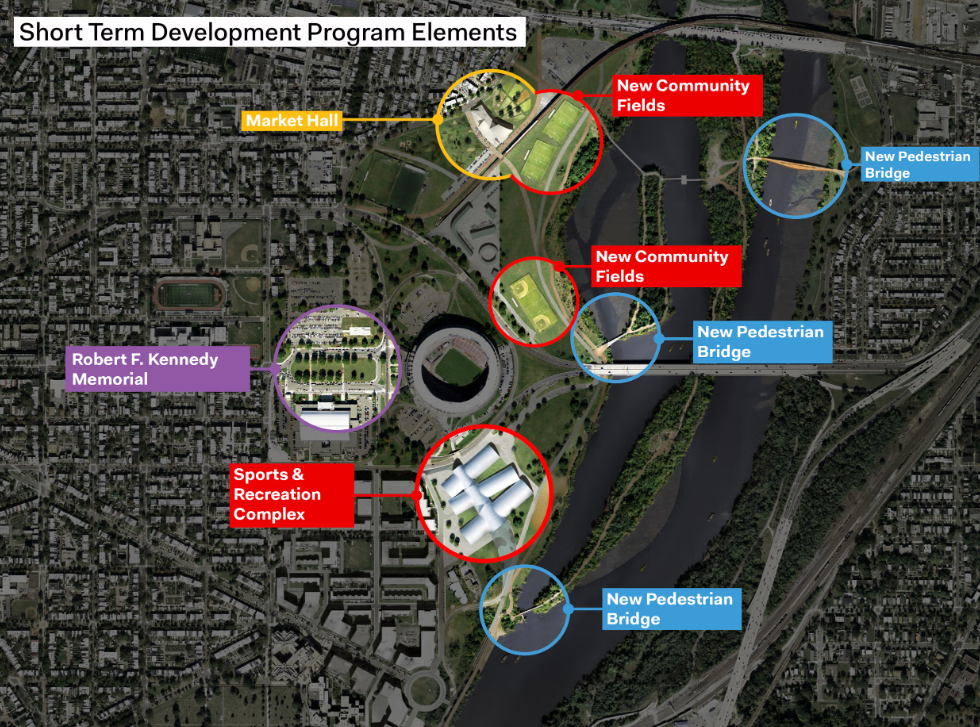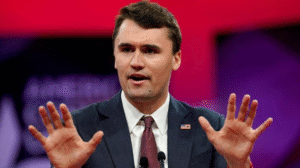Washington D.C. unveils a $3 billion RFK Stadium deal — a historic move set to transform the city and redefine its future through sports, housing, and economic development. This transformative project, officially announced by Mayor Muriel Bowser and Washington Commanders owner Josh Harris, will bring back an NFL stadium to the heart of D.C. while revitalizing 174 acres of prime urban land.
The $3 billion investment marks one of the biggest redevelopment efforts in Washington D.C.’s history, promising a new era of prosperity, pride, and community engagement.

Why Washington D.C. Chose the Historic RFK Site
The RFK Stadium site holds deep emotional and historical value for Washington D.C. residents. Once home to the Commanders from 1961 to 1996 — during which they won three Super Bowls — RFK is more than just a stadium: it’s a symbol of the city’s sports legacy.
The decision to return to this iconic location wasn’t just sentimental. The RFK site offers:
| Factors | Why RFK Site Was Chosen |
|---|---|
| Location | Central access, close to Metro stations, highways, and Anacostia River waterfront. |
| History | Deep fan loyalty and cultural significance tied to the Commanders’ golden years. |
| Land Availability | 174 acres ready for multi-purpose redevelopment without major displacement. |
| Economic Potential | Estimated billions in long-term tourism, business, and job creation benefits. |
The selection aims to blend Washington D.C.’s rich sports tradition with a bold new vision for urban revitalization.
Full Breakdown: What the $3 Billion RFK Stadium Project Includes
The RFK Stadium redevelopment isn’t just a sports project — it’s a multi-phase city transformation plan. Here’s what the $3 billion will deliver:
- New NFL Stadium:
- Capacity: 60,000 to 65,000 seats
- Features: Retractable roof, luxury suites, eco-friendly energy solutions
- Affordable Housing:
- Hundreds of units for low- and middle-income families
- Youth Sports Complex:
- Soccer fields, basketball courts, public fitness areas
- Retail and Restaurants:
- Year-round marketplace with local vendors and national brands
- Public Transportation Upgrades:
- Improved Metro access, new bus lines, and pedestrian-friendly pathways
This is not just a stadium — it’s an entire community ecosystem designed for everyday life, not just game days.
Map: The RFK Stadium Redevelopment Vision
RFK Stadium Redevelopment
│
├── New Stadium
│ ├── 60,000+ seats
│ ├── Retractable roof
│ └── NFL and Concert Events
│
├── Housing
│ ├── Affordable Units
│ └── Mixed-income communities
│
├── Youth and Public Spaces
│ ├── Sports fields
│ └── Recreation centers
│
├── Retail and Dining
│ ├── Local businesses
│ └── National brands
│
└── Transportation
├── Metro upgrades
└── New bus routes
This visual map helps easily understand how the project is designed to benefit both sports fans and D.C. residents.
Community Reactions: Support and Concerns
Public Excitement
- Fans are thrilled about returning to the Commanders’ original home.
- Local businesses are optimistic about increased foot traffic and sales.
- Residents welcome the plans for more green space and affordable housing.
Political and Fiscal Concerns
However, not everyone is fully convinced:
- Taxpayer Funding Worries:
D.C. Council members like Phil Mendelson have called for strict oversight of the city’s $850 million contribution. - Community Equity Questions:
Advocates stress the need for affordable housing and ensuring that D.C. residents — not just corporations — benefit from the redevelopment.
The debate underscores a critical balance: driving economic growth without displacing existing communities.
Economic Impact: How the RFK Stadium Deal Will Boost D.C.’s Economy
According to projections by the D.C. Economic Partnership:
| Metric | Estimate |
|---|---|
| New Jobs Created | 10,000+ |
| Tourism Boost | 2+ million new annual visitors |
| Tax Revenue Growth | $400 million over 10 years |
| Long-term Economic Impact | Over $6 billion |
The project is expected to supercharge D.C.’s economy, making it a model for urban stadium projects across the United States.
Timeline: When Will the New Stadium Open?
- 2025: Final design and council approvals
- 2026-2028: Construction phase begins
- 2029: Stadium opens for public events and community use
- 2030 NFL Season: Washington Commanders play first home game at RFK 2.0
The next 5 years will see major changes to the D.C. skyline, offering residents new reasons for excitement and civic pride.
Conclusion: RFK Stadium’s Comeback Will Reshape Washington D.C.’s Future
The $3 billion RFK Stadium redevelopment is more than a construction project; it’s a once-in-a-generation opportunity to honor Washington D.C.’s past while building a more vibrant, inclusive future.
With new jobs, affordable housing, enhanced public spaces, and a revitalized waterfront, the deal promises benefits that go far beyond football. Still, the city must maintain transparency, equity, and community focus to ensure the project delivers its full potential.
Stay connected for more updates on how Washington D.C.’s skyline, economy, and culture are about to change forever.
[USnewsSphere.com / WP]





